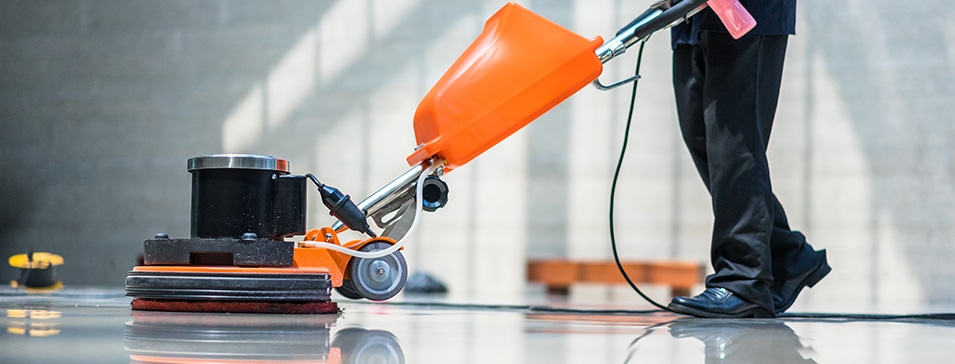Introduction
When it comes to home aesthetics, ceramic tile floors are a popular choice due to their durability and elegance. However, keeping them clean and pristine requires some know-how and effort. In this ultimate guide, we will explore the best practices and techniques for mastering ceramic tile floor cleaning.
Understanding Ceramic Tile Floors
Ceramic tiles are clay-based tiles that are hardened through firing in a kiln. They come in various sizes, shapes, and colors, making them versatile for different design preferences. These tiles can be glazed or unglazed, each having unique properties that suit various areas of your home.
Advantages of Ceramic Tile Flooring
Ceramic tile floors offer several advantages. They are highly durable, resistant to scratches, and can withstand heavy foot traffic. Additionally, they are water-resistant, making them ideal for kitchens, bathrooms, and other high-moisture areas. Furthermore, ceramic tiles are easy to clean, making maintenance less of a hassle.

Types of Ceramic Tiles
Two primary types of ceramic tiles exist: glazed and unglazed. Glazed tiles have a protective layer that adds shine and makes them resistant to stains. Unglazed tiles, on the other hand, have a natural matte finish and require sealing for protection.
Preparing for Cleaning
Prior to starting the cleaning process, ensure you have all the essential supplies ready. You’ll need a soft-bristled broom, a vacuum cleaner (with a brush attachment for textured tiles), a mop, a bucket, and appropriate cleaning solutions. Ensure that the cleaning products you use are suitable for ceramic tiles to avoid damage.
Everyday Maintenance
Regular sweeping and dusting are essential for preventing dirt and debris from scratching the surface of your ceramic tiles. Use a soft-bristled broom or a vacuum cleaner with a brush attachment to remove loose dirt and dust. For daily maintenance, a dry mop or a microfiber mop is sufficient.
When it comes to mopping, use a mild detergent or a pH-balanced cleaner diluted in water. Avoid using harsh chemicals that may damage the tiles or strip away the glaze. Change the mop water frequently to prevent smearing dirt across the floor.
In case of spills or stains, address them immediately to prevent them from becoming stubborn marks. Blot the spill with a clean cloth, and then clean the area with a suitable cleaner.
Deep Cleaning
Over time, your ceramic tile floor may accumulate tough stains that require deep cleaning. For such stains, consider using a specialized ceramic tile cleaner or a mixture of baking soda and water to form a paste. Apply the paste to the stain, let it sit for a few minutes, and then scrub gently with a soft brush before rinsing thoroughly.
Grout, the material that holds the tiles together, can also attract dirt and stains. Regularly clean and maintain the grout lines using a mixture of baking soda and water or a commercial grout cleaner. Additionally, steam cleaners can be effective in removing grime from both tiles and grout.
Special Care and Considerations
To keep your ceramic tiles looking new, consider polishing and sealing them regularly. Polishing will restore their shine, while sealing will protect the tiles from stains and moisture penetration.
Prevent scratches and damage by placing felt pads under furniture legs and using rugs or mats in high-traffic areas. Promptly clean any spills on the floor, especially acidic substances that may etch the glaze.
Eco-Friendly Cleaning Solutions
For environmentally-conscious homeowners, there are several eco-friendly cleaning options available. You can create homemade tile cleaners using simple ingredients like vinegar, baking soda, and lemon. Alternatively, choose cleaning products from brands that prioritize sustainability and use biodegradable materials.
Troubleshooting Common Issues
Discolored grout can be a common issue in ceramic tile floors. To address this, mix hydrogen peroxide with water and apply it to the grout lines, scrubbing gently until the stains fade.
Chipped or cracked tiles should be addressed promptly to prevent further damage. Remove the damaged tile carefully and replace it with a new one using suitable adhesive.
Maintaining Different Types of Ceramic Tiles
Glazed and unglazed ceramic tiles require slightly different maintenance approaches. Glazed tiles are easier to clean due to their protective layer, while unglazed tiles need sealing to prevent stains and moisture absorption.
Regular Cleaning Schedule
To maintain the beauty and longevity of your ceramic tile floor, establish a regular cleaning schedule. Perform weekly cleaning routines to keep the floor free from dirt and debris. Additionally, include monthly maintenance tasks, such as deep cleaning and grout inspection.
Avoiding Costly Mistakes
Using the wrong cleaning products can damage your ceramic tile floor and even void its warranty. Always refer to the manufacturer’s guidelines for suitable cleaning solutions. Moreover, don’t neglect regular maintenance, as it can lead to more significant issues in the long run.
Conclusion
Mastering ceramic tile floor cleaning services is crucial to preserving the beauty and lifespan of your floor. By understanding the different types of ceramic tiles, preparing for cleaning, and following proper maintenance routines, you can keep your floors looking stunning for years to come.
Published on: July 25, 2023
